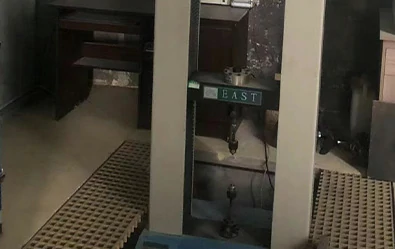loading...
- No. 9, Xingyuan South Street, Dongwaihuan Road, Zaoqiang County, Hengshui, Hebei, China
- admin@zjcomposites.com
- +86 15097380338
- Welcome to visit our website!
floor grating
Understanding Floor Grating A Versatile Solution for Various Applications
Floor grating, a material often overlooked in architectural design, plays a pivotal role in ensuring safety, functionality, and aesthetic appeal in various environments. Grating typically consists of a framework of parallel bars that form an open grid structure. It is commonly made from a variety of materials, including steel, aluminum, and fiberglass, each offering distinct advantages tailored to specific applications.
One of the primary benefits of using floor grating is its safety features. The open design allows for excellent drainage and ventilation, which is particularly essential in areas prone to moisture or chemical spills. By promoting quick drainage, floor grating reduces the risk of slip-and-fall accidents, making it a preferred choice for industrial and commercial settings. For instance, in kitchen environments, where spills are frequent, grating prevents water accumulation and ensures a safer workspace for staff.
In industrial settings, floor grating is invaluable for providing stable walking surfaces over hazardous areas, such as pits, trenches, and machinery. The strong structure holds substantial weight, allowing frequent foot and vehicle traffic without compromising safety. Moreover, its durability is a significant aspect; materials like steel or fiberglass can withstand corrosive environments, high temperatures, and heavy impacts, prolonging their lifespan and reducing maintenance costs.
floor grating

Architects and designers have also embraced floor grating for its aesthetic potential
. Grating systems can be customized in terms of size, shape, and finish, allowing them to blend seamlessly with various design preferences, from modern to traditional. For creative applications, floor grating can create visually striking elements. When integrated with lighting systems, it can produce captivating light patterns and dynamic environments, enhancing the overall atmosphere of a space.Different types of floor grating are available, each catering to specific needs. For instance, fiberglass grating is lightweight and resistant to corrosion, making it suitable for chemical processing plants. In contrast, steel grating, known for its strength, is often deployed in heavy-duty industrial environments, such as warehouses and factories. The selection of material largely depends on the requirements of the application, including load capacity, environmental exposure, and aesthetic considerations.
Moreover, floor grating contributes to sustainability efforts. By allowing natural light and air to flow through, it promotes energy efficiency in building designs. Additionally, many manufacturers have started producing grating made from recycled materials, aligning with the growing trend towards environmentally friendly construction practices.
In conclusion, floor grating is a versatile solution that encompasses safety, functionality, and design flexibility. Its unique characteristics make it suitable for a wide range of applications, from industrial factories to aesthetically pleasing public spaces. As the demand for innovative and sustainable building materials continues to grow, floor grating remains an essential component in modern architecture, providing practical benefits while enhancing overall design. Whether for safety, durability, or aesthetics, it is clear that floor grating serves a significant role in various industries.
-
The Rise of FRP Profiles: Strong, Lightweight, and Built to LastNewsJul.14,2025
-
SMC Panel Tanks: A Modern Water Storage Solution for All EnvironmentsNewsJul.14,2025
-
GRP Grating: A Modern Solution for Safe and Durable Access SystemsNewsJul.14,2025
-
Galvanized Steel Water Tanks: Durable, Reliable, and Ready for UseNewsJul.14,2025
-
FRP Mini Mesh Grating: The Safer, Smarter Flooring SolutionNewsJul.14,2025
-
Exploring FRP Vessels: Durable Solutions for Modern Fluid HandlingNewsJul.14,2025
-
GRP Structures: The Future of Lightweight, High-Performance EngineeringNewsJun.20,2025
